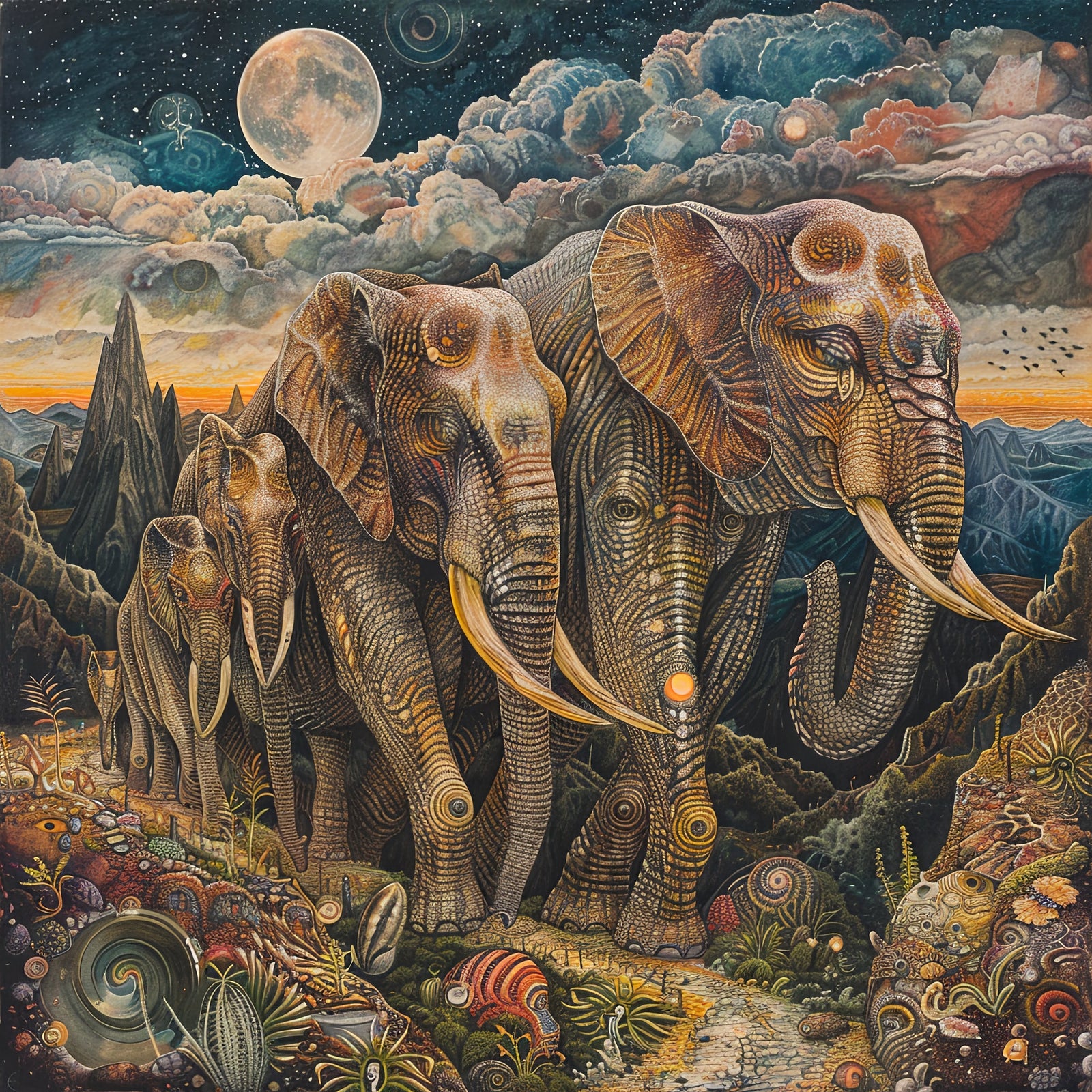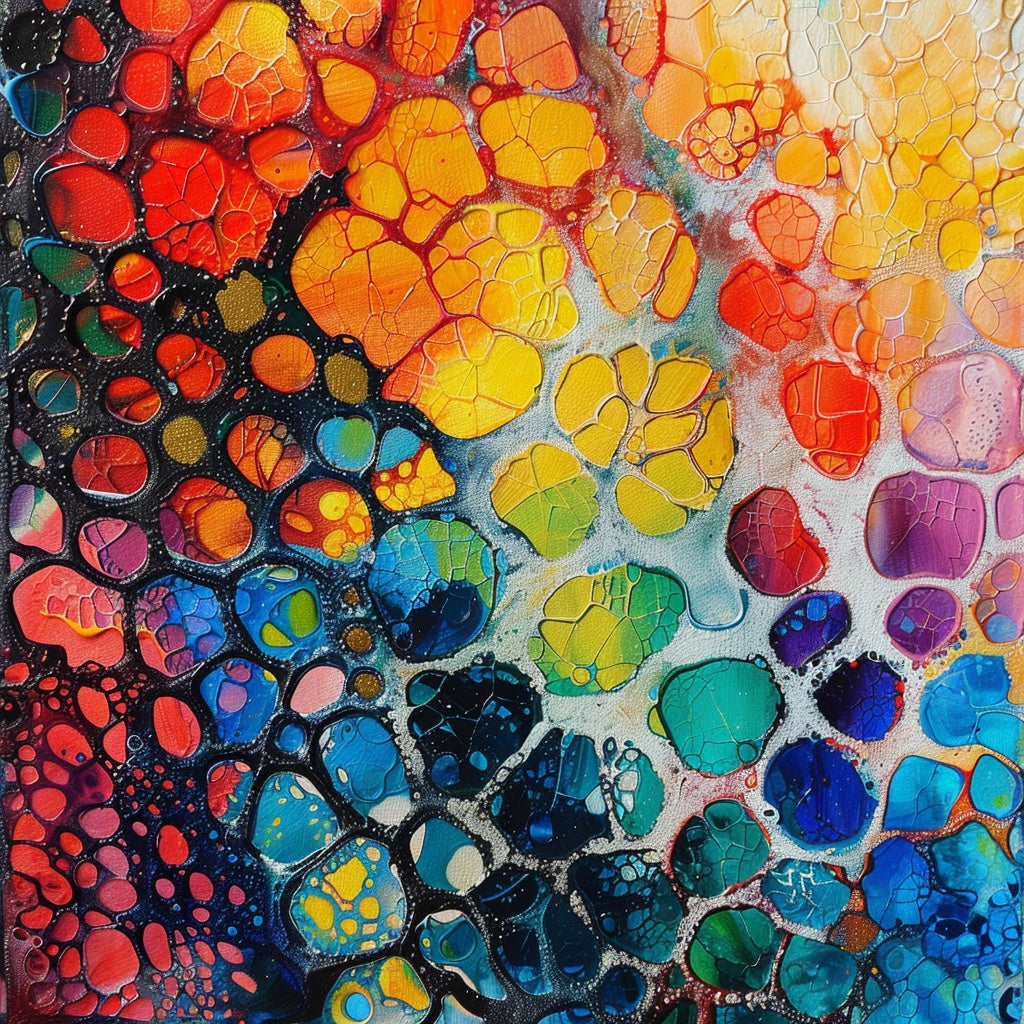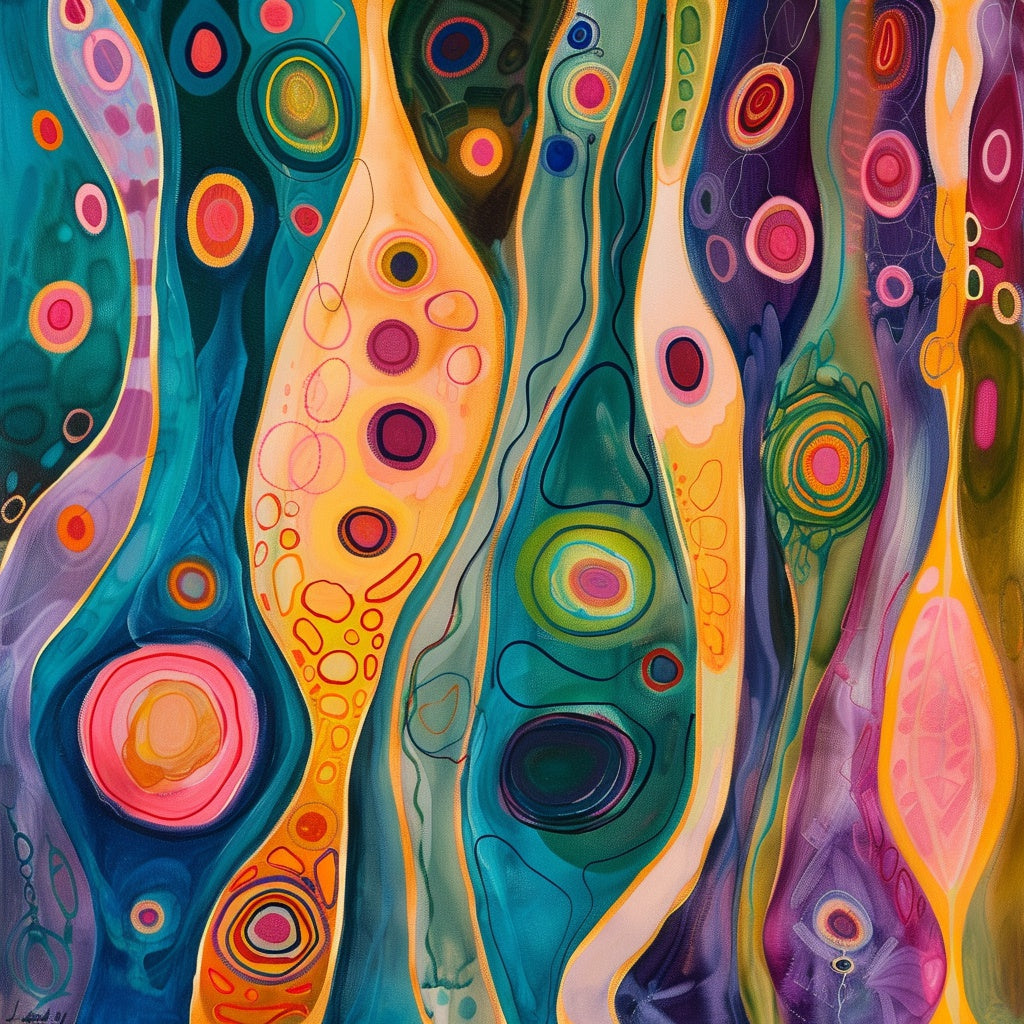Creating Realistic AI Art: A Comprehensive Guide
The intersection of art and artificial intelligence is rapidly evolving, with tools like DALL-E, Stable Diffusion, and Midjourney empowering individuals to generate complex and imaginative images from simple text descriptions. While AI art is fascinating in its own right, there is a growing interest in generating realistic AI art – images that convincingly mimic the real world. This guide explores techniques, tools, and best practices for achieving photorealistic results with AI.
Table of Contents
- Understanding the Fundamentals of AI Art Generation
- Mastering the Art of Prompting
- Exploring AI Art Generation Models and Techniques
- Refining Your AI Art with Parameters and Settings
- Overcoming Common Challenges in Realistic AI Art
- Enhancing AI Art with Post-Processing
- Engaging with AI Art Communities
- Key Takeaways
Understanding the Fundamentals of AI Art Generation
Before diving into creating realistic AI art, it's crucial to understand the basic principles behind AI art generation. AI art generators utilize complex algorithms, primarily diffusion models and Generative Adversarial Networks (GANs), to create images from text descriptions.
Diffusion Models
Diffusion models, such as Stable Diffusion, DALL-E 2, and Midjourney, begin with a field of random noise. They then refine it iteratively to match a user's text description. This step-by-step process allows for a high degree of control and detail in the final image. Think of it like sculpting: starting with a block of raw material, the AI progressively carves away the noise to reveal a detailed form. Diffusion models use an iterative approach, making small refinements at each stage to achieve highly detailed results.
Generative Adversarial Networks (GANs)
GANs, like VQGAN-CLIP and StyleGAN, involve two neural networks competing against each other. One network generates images, while the other evaluates their authenticity, pushing both networks to improve. This process leads to increasingly realistic results. It's akin to a forger and an art critic locked in a constant battle: the forger creates an image, and the critic tries to discern if it is fake, which forces the forger to create an even more realistic image. This back-and-forth dynamic helps to refine the generated images.
Mastering the Art of Prompting
The key to generating realistic AI art is crafting effective prompts. A well-structured prompt gives the AI clear instructions and specific details, guiding it toward the desired result. It's like giving a detailed set of directions: the more specific you are, the easier it is for the AI to understand and follow your vision. Here’s a breakdown of the essential elements of effective prompting:
Essential Elements of a Good Prompt
- Subject: Clearly define the main subject, whether it's a person, object, or scene. Be specific and avoid ambiguity. For example, instead of "a woman," try "a portrait of a woman with long flowing hair and piercing blue eyes".
- Composition: Describe the arrangement of elements within the image, including the positioning of the subject, background, and any other objects. Use terms like "close-up," "wide-angle," or "rule of thirds" to guide the AI's composition.
- Lighting: Specify the lighting conditions, such as "soft natural light," "dramatic backlighting," or "studio lighting." This significantly impacts the mood and realism of the image.
- Style: Indicate the desired artistic style, such as "photorealistic," "hyperrealistic," "cinematic," or "photography." You can also reference specific photographers or camera models to refine the style further.
- Details: Include specific details about the subject’s appearance, textures, colors, and emotions. The more details you provide, the more realistic the AI can make the image.
- Negative Prompts: Use negative prompts to exclude unwanted elements or artifacts. For example, if you want to avoid distorted hands, you might include "deformed hands" or "extra fingers" in your negative prompt.
An example of a detailed prompt is: "A photorealistic close-up portrait of a young woman with freckles, wearing a red dress, standing in a field of sunflowers, with soft golden hour lighting, in the style of Annie Leibovitz. Negative prompt: distorted hands, blurry face". This detailed prompt allows the AI to generate a particular image, leaving little to interpretation, thus improving realism and detail.
Exploring AI Art Generation Models and Techniques
Several AI art generation models are available, each with its strengths and weaknesses. Choosing the right model is crucial for achieving realistic results. Here are a few popular options:
Popular AI Art Generation Models
- DALL-E 2: Known for its ability to generate highly detailed and creative images from complex descriptions.
- Stable Diffusion: Offers a high degree of control and customization, with various parameters and settings that can be adjusted.
- Midjourney: Excels at creating artistic and imaginative images with a unique aesthetic style.
- Leonardo.AI: Provides a user-friendly interface and a variety of features for generating realistic images. It also offers a "PhotoReal" model option in Legacy Mode, which enhances realism and provides more control over the final output.
Techniques to Enhance Realism
Beyond text-to-image generation, several techniques can be employed to enhance the realism of AI art:
- Image-to-Image Generation: Some AI tools, like Leonardo.AI, allow you to use an existing image as a starting point. This provides more control over the composition and overall look of the final image, making it easier to achieve realistic results. This is like a painter working from a photograph, where an initial composition is already set, and the AI can use it as a guide.
- Neural Style Transfer: This technique combines the content of one image with the style of another, allowing you to apply the aesthetic of a famous painting or photograph to your AI-generated image. This approach can be used to replicate the photographic style of a certain photographer by taking their photos and applying their stylistic elements to your AI image.
- Latent Space Manipulation: This involves navigating the abstract space where AI-generated images reside, allowing for precise control over specific features and attributes. This allows you to fine-tune the image, adjusting specific attributes for the desired result.
Refining Your AI Art with Parameters and Settings
Many AI art generators offer advanced parameters and settings that can be fine-tuned to achieve realistic results. Understanding these parameters is crucial for controlling the final output.
Common Parameters
- CFG Scale: This parameter controls the influence of the prompt on the generated image. Higher values result in images that more closely adhere to the prompt. If your prompt is a recipe, the CFG scale is like the oven temperature; the higher the heat, the more the final dish will resemble the recipe.
- Steps: This determines the number of steps the AI takes to generate the image. More steps generally lead to more detailed and refined results. Each step can be considered a layer because more layers provide more opportunities for detail.
- Sampler: Different sampling algorithms can affect the quality and style of the generated image. The sampling algorithm could be thought of as the specific brush strokes of a painter; different styles can produce vastly different results.
- Seed: This is a specific starting point for the random number generator, allowing you to reproduce the same image or variations of it. Think of a seed as the starting template; it enables you to generate variations of the same initial creation.
Midjourney Specific Parameters
- Stylize: This parameter controls the artistic "stylization" of the image. Lower values result in more realistic and less stylized outputs. The stylized parameter acts as a filter; less stylized is closer to a raw photograph.
- Style Raw: This option minimizes the AI's default aesthetic and produces images that more closely adhere to the prompt. Like a camera's raw format, which captures the most information without processing, Style Raw is intended to generate images without the AI's preset stylistic leanings.
Jasper Parameters
Jasper offers specific parameters for refining AI art:
- Mood: Choose from different mood settings, such as calm, exciting, fun, gloomy, happy, and whimsical. The mood setting can be likened to a music composer selecting a particular key or tempo to convey a specific mood; it sets the overall emotional tone for the image.
- Medium: Select the desired artistic medium, such as acrylic paint, collage, ink, mixed media, oil paint, photography, or watercolor. Just as an artist might choose different materials for a painting, the medium parameter allows a user to select different textures and looks.
- Inspiration: Assign a specific artist style from presets like Warhol, Money, Norman Rockwell, Picasso, Dali, and Van Gogh. This parameter allows users to draw inspiration from certain art styles and apply them to the AI image.
- Keywords: Add descriptive keywords such as 8K resolution, ambient light, black & white, close-up, flat lighting, full-face portrait, global illumination, highly-detailed, masterpiece, photorealistic, and realistic. Keywords operate as precision instruments; they allow users to directly communicate specific aspects of realism that they desire.
Overcoming Common Challenges in Realistic AI Art
While AI art generators continuously improve, some challenges remain in achieving perfect realism. Understanding these challenges and how to overcome them is crucial for generating quality AI art.
Faces and Hands
AI models sometimes struggle with generating realistic faces and hands, often producing distorted features or unnatural poses. Think of it as the AI not yet understanding the complexities of human anatomy, especially when it comes to nuances in hands and facial expressions. To address this:
- Provide detailed descriptions of facial features.
- Use reference images for hands in different poses.
- Experiment with negative prompts to exclude unwanted artifacts.
For instance, providing the AI with details like "a hand gently holding a glass of water with long slender fingers" will help refine its understanding of a hand.
Complex Textures and Materials
Rendering realistic textures, such as hair, fabric, or water, can be challenging for AI. Achieving realistic textures can teach AI how to recreate the feel of visually represented materials. To address this:
- Experiment with different AI models.
- Fine-tune settings.
- Consider using image-to-image generation with a real-life reference image to improve the quality of textures.
For example, when generating a picture of flowing hair, you can improve the quality by using prompts such as "long, wavy, and flowing" or "glossy" to get the texture you want. You could also use an image of flowing hair as a reference.
Maintaining Consistency
If you're creating a series of images with the same characters or objects, it can be difficult to maintain consistency across different descriptions. This is similar to an author trying to ensure their main characters remain consistent across several books; the AI must be reminded of key details to produce realistic and coherent results. To address this:
- Define characters with consistent names and descriptions to help the AI recognize them.
- Consider using a consistent seed value for variations of the same image.
For example, if you have a character named "Jane," always refer to her by that name, and consistently describe her features in every prompt. You can also use the same seed to produce slight variations of her.
Enhancing AI Art with Post-Processing
Even with carefully crafted prompts and fine-tuned settings, AI-generated images may benefit from post-processing. Just as a film editor polishes raw footage, post-processing gives you more control over the final product. Use image editing software like Photoshop or GIMP to:
- Refine details: Adjust lighting, colors, and sharpness to enhance the realism of the image.
- Correct imperfections: Remove any artifacts or distortions that may have been generated by the AI.
- Add personal touches: Incorporate your own artistic style and preferences to make the artwork truly unique.
Post-processing is an important step for fine-tuning your AI art. It’s an opportunity for your artistic skills to complement the power of AI, creating a final image that is truly your own.
AI art generation is a collaborative process between human creativity and AI capabilities. Combining AI skills with human oversight and artistic input leads to the most compelling and realistic results.
Engaging with AI Art Communities
Joining online communities and forums dedicated to AI art can be invaluable in your journey to creating realistic AI art. These communities offer a platform to
- Share your work: Get feedback and inspiration from other artists.
- Discuss techniques: Learn new tips and tricks for prompting and generating realistic images.
- Stay updated: Keep up with the latest developments in AI art generation models and tools.
Engaging with these communities can significantly enhance learning and refine your techniques. Think of it as joining a master class where you are surrounded by like-minded and knowledgeable individuals who can help you improve. Some notable platforms include:
- AIArtists.org: A curated platform showcasing historically significant AI art and exploring the impact of AI on art and culture.
- Simplified AI Art Community: A thriving community of artists who use Simplified's AI image generator to create and share their work.
- r/aiArt: A subreddit dedicated to the generation and use of visual, digital art using AI assistants.
- NightCafe Creator: An AI art generator with a strong community focus, offering daily challenges and chat rooms for artists to connect.
- Promptomania: An AI art community with a prompt generator and resources for creating detailed prompts.
Key Takeaways
Creating realistic AI art involves a blend of technical understanding, artistic vision, and iterative refinement. Here are some key takeaways:
- Master the Art of Prompting: Crafting detailed and specific prompts is crucial for guiding AI toward generating realistic images.
- Explore Different AI Models and Techniques: Experiment with various AI art generators and techniques like image-to-image generation, neural style transfer, and latent space manipulation to find the best tools for your needs.
- Refine with Parameters and Settings: Fine-tune the parameters and settings of your chosen AI model to achieve the desired level of realism and detail.
- Enhance with Post-Processing: Utilize image editing software to refine details, correct imperfections, and add personal touches to your AI-generated art.
- Engage with the AI Art Community: Connect with other artists, share your work, and learn from the experiences of others in online communities and forums.
By mastering these elements, you can generate impressive AI art that blurs the lines between artificial and real.
Creating realistic AI art is a dynamic and ever-evolving process that merges technology and creativity. By mastering the art of prompting, exploring different AI models and techniques, and refining your images with parameters and post-processing, you can generate stunning visuals that convincingly mimic the real world. Engaging with the AI art community, staying curious, and continuing to experiment are crucial to pushing the boundaries of what's possible with AI art. The increasing accessibility of AI art tools has the potential to democratize creativity and empower anyone to express their artistic vision, regardless of their technical skills.
Footnotes:
zapier.com
The top AI art generators | Zapier
A Complete List of AI Art Generators - Originality.ai
AI Art Techniques to Know for AI and Art - Fiveable
How to effectively prompt for AI art and generative AI image creation - GoDaddy Blog
How to Make AI Art in 2025 (Detailed Tutorial) - Elegant Themes
AI Art Guide: Midjourney Prompts for Realistic Photos | by Seven Sky Writes | Medium
Enhancing Realism in AI Art: Essential Tips for MidJourney | Dive!
The Ultimate Guide To Leonardo AI Realistic Prompts: Mastering Hyper-Realism
How to Create AI Images: A Step-by-Step Guide to Generating Realistic AI Images
Mastering AI Art Generation: Top Tips Revealed - AutoGPT
How to Make AI Art: Essential Guide for Artists - eWEEK
10 Mind-Blowing Examples of AI-Generated Art - ClickUp
Embrace the Future: Exploring the Wonders of AI Painting - Lifestyle For Real Life -
Any other AI art addicts here? - Wacky Writers' Forum
Top 25 AI Artists - Photos, Bios, Exhibitions - History of AI Art- AIArtists.org
Join Top AI Art Communities for Like-minded Artists - Simplified
Welcome to ai Art! - Reddit
Free AI Art Generator: All the best AI models in one place
promptoMANIA: AI art community with prompt generator
When Machines Mimic, but Don't Create: Why AI “Art” Isn't True Art



Leave a comment (all fields required)